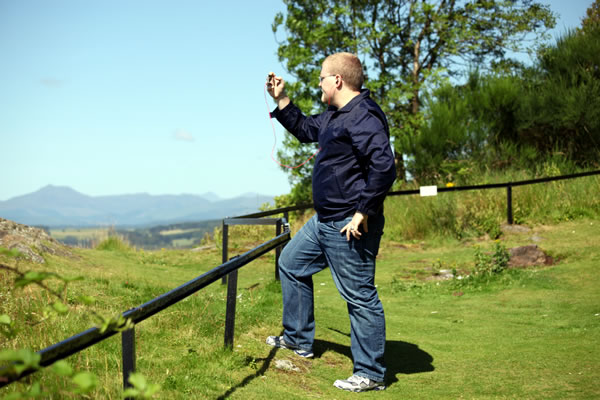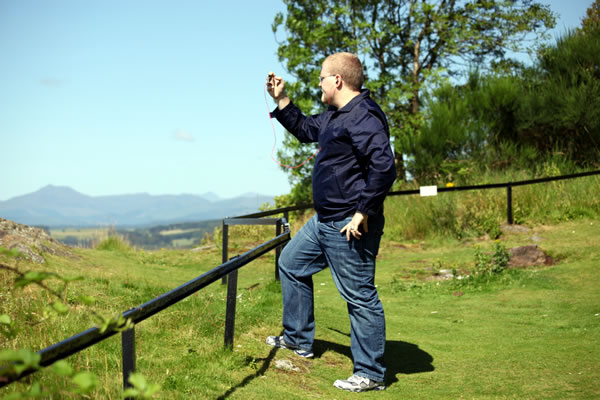When I was 15 yrs old, my parents took me to see Braveheart. It was a violent film, but they seemed to tolerate that sort of thing as long as there was history or an important message involved. This film had both. I was enamored by the kilts, the brutality of the fighting, and the style of leadership displayed by William Wallace. My then minimal understanding of thirteenth-century warfare aside, I believed the movie was somehow authentic in its presentation. This was probably due to its length (just shy of 3 hrs!) and its violent nature. If a movie is both long and violent, then it is somehow genuine, at least that was my perception as a kid. The ending was, of course, moving. With Wallace being hung, drawn, and quartered, I agonized over the pain, I got chills when he screamed “Freedom,” and I felt relieved when he was beheaded.
For at least the next decade, the movie was on constant rotation in my life. Every now and then, I would pop the VHS or DVD and just enjoy. Before I moved out, my dad bought a book, Born in Blood, which he told me discussed Wallace and his struggle against the English. In reality, the book was a history about the Freemasons, an organization I had zero understanding of or interest in as a teenager. I flipped through the book, but I could not get through the first chapter. As such, Wallace remained one of those mysterious figures whose entire history came from a Hollywood movie. It was not until recently with my continual growing obsession with military history that I finally understood the story of Wallace, or at least gained a clearer understanding of events.
My first scholarly reading on Wallace came from Brian Todd Carey’s Warfare in the Medieval World. In the book, he analyzes the ebb and flow of heavy and light infantry and cavalry over the years. Carey featured the Battle of Falkirk (1298), a battle where Edward I (Longshanks) overwhelmingly defeated Wallace. This was the second battle in Braveheart. The book revealed how vastly different the battle unfolded compared to the movie. Everything was different including the armor, weapons, tactics, and even the participants. From there, I tracked down several other books to learn more about Wallace and his war against the English.
What I found was that the true story of Wallace had similar highlights compared to Braveheart, but much of the details were different. Wallace did fight and defeat an English army, but the battle looked nothing like the one depicted in the movie. Edward did arrive in Scotland to put down Wallace’s rebellion, but again, the real battle was vastly different. Several nobles did betray Wallace, but they did so before the battle of Falkirk and not during it. Wallace was betrayed and handed to the English, but rather than happening on the way to meet with Robert the Bruce, it was while he was asleep. Other aspects are hardly worth mentioning like how Wallace did not sleep with the princess, as she was far too young. Yet, with all this book knowledge, I still lacked the experience of seeing the actual battlefields.
When my wife and I determined we were going to spend three weeks in Scotland this summer, I immediately set out to track down the warpath of Wallace. I wanted to stand where he stood. I wanted to walk the battlefields where he won and lost. There is plenty to see. Some of it is moderately preserved and outlined with visitor centers and monuments. Other aspects remain elusive, contested, and forgotten. At times, not even locals could help me. As such, I spent a lot of time searching and analyzing fields with no assistance aside from my GPS and some books. The experience was at times frustrating, but in the end, it was always exhilarating and fruitful.
What will follow on this website will be a chronicle of the major aspects of Wallace’s warpath as I experienced them. My journeys did not take me into England, so I did not visit the location of his trial and execution. However, I did visit the sites of his two major battles as well as where he was captured. The following are the upcoming articles that are a result from trekking Wallace’s warpath. I will include photos and details on how to get to some of the locations that were tough for me to track down.
- The Strategic Importance of Stirling
- The Real Location of Stirling Bridge
- The Battle of Stirling Bridge (1297)
- Visiting the National William Wallace Monument in Stirling
- An Alternative Design to the National Wallace Monument
- The Battle of Falkirk (1298)
- Tracking Down Wallace’s Falkirk Battlefield
- The Capture of William Wallace (1305)
- Medievalism on Screen: An Annotated Bibliography (Braveheart section)

Recommended Reading
If you’re looking for some good books on William Wallace, then The Wallace Book is a great place to start.
Andrew Fisher’s William Wallace is an immensely enjoyable biography–biography, but written for the layman. He tells the stories while also criticizing the sources, but he never loses the reader.
For those who want to trek the same roads and battlefields, I recommend Alan Young’s passionate, richly illustrated In the Footsteps of William Wallace.

